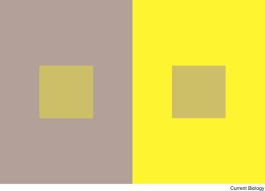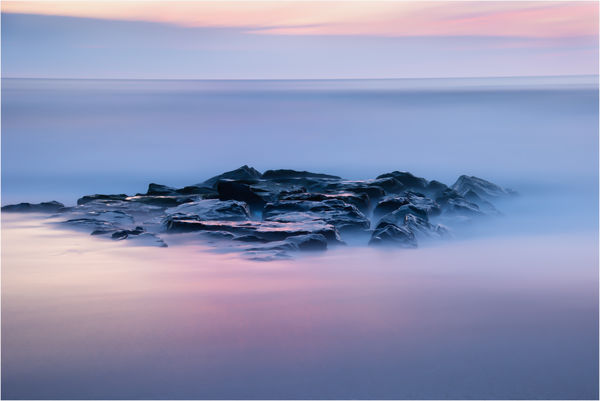How's your presentation?
Apr 10, 2019 10:32:07 #
An interesting conversation evolved within a PP Forum thread that I felt would be best served as a new topic here in For Your Consideration. I'm going to interpret those comments as being about traditional vs. creative presentation - whether by matting or other means - and what that says about you, the photographer.
Please share your experiences and viewpoints regarding exhibits and competitions or other venues. Aside from any requirements (rules), have you ever made decisions re presentation based on how you wish to be viewed by others?
Feel free to wander and wonder
Please share your experiences and viewpoints regarding exhibits and competitions or other venues. Aside from any requirements (rules), have you ever made decisions re presentation based on how you wish to be viewed by others?
Feel free to wander and wonder

Apr 10, 2019 11:35:31 #
Linda From Maine wrote:
An interesting conversation evolved within a PP Fo... (show quote)
Good idea, Linda. There are quite a few places, physically and mentally to make and show work. Each is fine in its own right. Also, creativity is important for each of us, and it too has many areas.
Fortunate is the photographer who is working in an area that matches their talent and their viewing goals.
Apr 10, 2019 14:41:12 #
I exhibit my work for public viewing at the University of Miami, generally on the floor where I keep an office at the school of law. I have become by default the "curator" of art on various sectors of the floor. I have kept the presentation simple based on cost and volume of rotating work. Large prints on canvas, simple gallery wrap with black edges. Usually 24 x 36. Photos, black aluminum gallery frames--currently color, no mat. No spacers. These are up for less than 12 months and I change out photos, so nothing fancy. For black and white, 16 x 20 frame, archival methods mat and backing with opening a bit over 10x 15 in so I can reveal edge of film as a border.
I use the black & white presentation showing film border, plus the simple black aluminum frame (white mats) for three reasons: to imitate the majority of presentations of professional displays at the Leica store exhibits I have visited; as a bit of vanity to show off when I am shooting and developing real film; and for cost reasons-the frame size and mats I use are archival and a bargain for what they are. By keeping it simple, I not only keep costs down, but spend little time worrying over anything other than the photographs.
If I saw trends in galleries moving to silver frames (some do still) I might change that one variable. My personal experience is that, at one time simple silver frames we're more dominant. Now, I see more black. When I travel I always pay attention to the presentation in museums and galleries. I want to present simply, but in sync with current professional practices.
I use the black & white presentation showing film border, plus the simple black aluminum frame (white mats) for three reasons: to imitate the majority of presentations of professional displays at the Leica store exhibits I have visited; as a bit of vanity to show off when I am shooting and developing real film; and for cost reasons-the frame size and mats I use are archival and a bargain for what they are. By keeping it simple, I not only keep costs down, but spend little time worrying over anything other than the photographs.
If I saw trends in galleries moving to silver frames (some do still) I might change that one variable. My personal experience is that, at one time simple silver frames we're more dominant. Now, I see more black. When I travel I always pay attention to the presentation in museums and galleries. I want to present simply, but in sync with current professional practices.
Apr 10, 2019 15:14:55 #
whwiden wrote:
Thanks so much for your comprehensive comments and especially for the reasons behind your choices. Great information!I exhibit my work for public viewing at the Univer... (show quote)
Apr 11, 2019 10:19:22 #
My work is in a couple of galleries and I do both juried and unjuried art shows from time to time. I've been printing some on aluminum, and they always get WOW reviews. Few sales, though, as they are expensive. When I print on metallic paper, I don't like putting them under glass. That destroys all the affect of the paper. So I frame them unmatted. I know they are "unprotected," but the affect of the paper is better that way.
I'm frequently stymied by galleries requiring white mats. I find it distracting to most images. I much prefer to mat to the print instead of using standard white with black frames. But more and more galleries insist on that. I talked to the framer in one gallery, and she agreed. However, they always offer to reframe, so that way they make even more $$. I don't think that's their reasoning, usually. Sometimes I rebel and give them what I want. Sometimes I don't.
I'm frequently stymied by galleries requiring white mats. I find it distracting to most images. I much prefer to mat to the print instead of using standard white with black frames. But more and more galleries insist on that. I talked to the framer in one gallery, and she agreed. However, they always offer to reframe, so that way they make even more $$. I don't think that's their reasoning, usually. Sometimes I rebel and give them what I want. Sometimes I don't.
Apr 11, 2019 10:43:37 #
AzPicLady wrote:
Thanks for this info, Kathy! I just don't picture you as a rebel My work is in a couple of galleries and I do both ... (show quote)

Apr 11, 2019 10:56:03 #
AzPicLady wrote:
My work is in a couple of galleries and I do both ... (show quote)
I understand that it can be frustrating to be limited in any way, including matting. The reasoning, however, is sound, based on color theory: a color is perceived different when surrounded by different colors.
Attached is an example of the general theory, and an example of how a color image's colors are weakened (similar color matting) or exaggerated (complementary color matting.)
Apr 13, 2019 09:46:54 #
Linda From Maine wrote:
An interesting conversation evolved within a PP Fo... (show quote)
In my club and here on the forum I see lots of different presentations. Some like to create a border that has colors from the photo. Others use borders that are digital representations of a framed print. I tend to go with the simple. For a competition photo I want a border that defines the edges of my composition, but does not intrude or take away any attention from my photo. So I don't use colored borders and I minimize the width of the border so that it just defines the edges. I guess it would be called a "stroke" rather than a border. Here is an example of a photo that was entered in the Salon group, and projected on a screen. Because the program we use to project images has a dark background, I use a white stroke. This photo scored a second place. (I've posted it here before)
Apr 13, 2019 11:02:23 #
Apr 13, 2019 15:39:45 #
Linda From Maine wrote:
Thank you, Erich!
It is a good topic. Glad to be able to help it along.
Erich
If you want to reply, then register here. Registration is free and your account is created instantly, so you can post right away.





